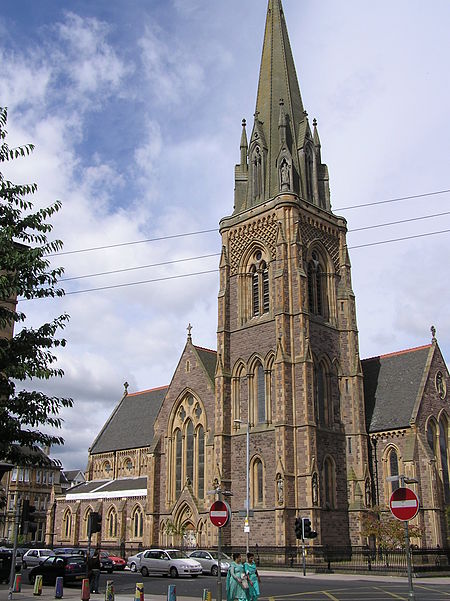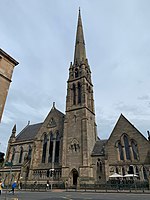St Mary's Cathedral, Glasgow

The Cathedral Church of St Mary the Virgin (Scottish Gaelic: Cathair-eaglais Naomh Moire), commonly called St Mary's Cathedral, is a cathedral of the Scottish Episcopal Church. It is located on the Great Western Road, in the west end of Glasgow, Scotland. The current building was opened on 9 November 1871 as St Mary's Episcopal Church and was completed in 1893 when the spire was completed. The architect was Sir Gilbert Scott. It was raised to cathedral status in 1908. The total height of the cathedral is 63 metres. The church structure is protected as a category A listed building.The other cathedrals in Glasgow are St Andrew's (Roman Catholic), St Luke's (Eastern Orthodox) and St Mungo's, the city's mediaeval cathedral, now used by the Church of Scotland, which has a presbyterian polity and does not use the term ‘cathedral’ to describe its churches.
Excerpt from the Wikipedia article St Mary's Cathedral, Glasgow (License: CC BY-SA 3.0, Authors, Images).St Mary's Cathedral, Glasgow
Great Western Road, Glasgow Woodlands
Geographical coordinates (GPS) Address External links Nearby Places Show on map
Geographical coordinates (GPS)
| Latitude | Longitude |
|---|---|
| N 55.8735 ° | E -4.275 ° |
Address
St Mary's Episcopal Cathedral
Great Western Road
G4 9HR Glasgow, Woodlands
Scotland, United Kingdom
Open on Google Maps







